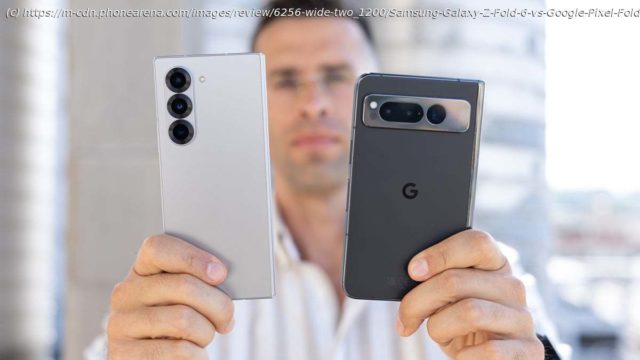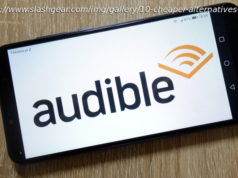Will the Pixel Fold be able to hold its ground against the incoming Galaxy Z Fold 6 onslaught?
Intro
Samsung just refreshed its foldable lineup with the new Galaxy Z Fold 6, which honestly doesn’t fall too far from the proverbial tree. Long story short, it is mostly similar to previous Galaxy Z Fold devices. This isn’t bad, however: for nearly half a decade now, the Galaxy Z Fold lineup has been the one to consider if you were willing to have the latest bleeding-edge foldable tech.
However, in the past few years, numerous challengers have risen, one of which is the Google Pixel Fold. The search giant’s first attempt at a foldable phone surely had some squeaky wheels, but was generally well-received. Google is most certainly cooking up a successor, but right now, the Pixel Fold is the one to beat.
How does the new Galaxy Z Fold 6 compare against the Google Pixel Fold?
Galaxy Z Fold 6 vs Google Pixel Fold differences:
Galaxy Z Fold 6Google Pixel Fold
A slight redesign with thinner bezels, a moer squarish aspect ratio Slimmer but wider device with a strong hinge, also heavier
The same camera system as before (50MP+10MP+12MP), likely software upgrades Triple 48MP camera with tons of AI features and functions
The finest Qualcomm chip on board (Snapdragon 8 Gen 3) Google Tensor G2 chip, the same as the Pixel 7 series
Smaller 4,400mAh battery on board Larger 4,821mAh battery on deck
Faster 25W wired and 15W wireless charging Slower 21W wired and 7.5W wireless charging
Table of Contents:
Design and Size
Display Differences
Performance
Camera
Audio Quality
Battery and Charging
Specs
Summary
Read more:
Galaxy Z Fold 6 release date predictions, price, specs, and must-know features
Google Pixel Fold Review: finally, a folding phone you can enjoy using even without unfolding
Samsung Galaxy Z Fold 6 vs Galaxy S24 Ultra: Key differences to expect
Design and SizeLarge and heavy, meet slim and tall
The Galaxy Z Fold 6 surely boasts a lovely design (Image by PhoneArena)
The Pixel Fold is a foldable that’s a bit wider than other foldable phones, which makes it extremely usable even when it’s folded. Yes, you can rely on the Pixel Fold in your day-to-day tasks without ever unfolding it, as its cover display is actually useful, unlike the regular foldables that are too narrow. Hint: most previous Galaxy Z Fold models have been this way. The Pixel Fold is also thinner than Samsung’s current Galaxy Z Fold, let’s see if this will be true for the next generation.
The Galaxy Z Fold 6 is both lighter and thinner than its predecessor. Although Samsung hasn’t used titanium as we had hoped, the overall weight of the Galaxy Z Fold 6 has dropped to 239gr, some 14 and 24gr lighter than the Galaxy Z Fold 5 and Galaxy Z Fold 4, respectively.
Thin and light, Samsung’s foldable stands out (Image by PhoneArena)
A notable change with the phone is the slightly different aspect ratio in contrast with its predecessor. The Galaxy Z Fold 6 adopts a boxier design thanks to a more squarish aspect ratio, making the phone more utilitarian, somewhat similar to the Pixel Fold.
However, in pure dimensions gained, we are looking at very minor differences. Folded, the phone is 68.1mm wide, just 1mm wider than the Z Fold 5, which isn’t enough to guarantee a much better user experience. The Pixel Fold, in comparison, is 79.5mm wide, which makes it that much more usable when folded.
All the usual ports in all the usual places (Image by PhoneArena)
Colors-wise, the Galaxy Z Fold 6 is available in Navy, Silver Shadow, and Pink, while Crafted Black and White will be exclusively available on Samsung.com.
The Galaxy Z Fold 6 also supports Samsung’s S Pen (sold separately). It comes with IP48 dust and water resistance, meaning that it is protected against larger particles and fully waterproof. The Pixel Fold doesn’t have stylus support; it also has merely IPX8 water-resistance, which means that it’s not dustproof.
Display Differences
Now those are some great displays! (Image by PhoneArena)
In terms of display, the Pixel Fold comes along with a large and beautiful 7.6-inch inner display. That’s where most of the positive aspects of it end, though. Firstly, the Pixel Fold has a peculiar quirk that makes it unable to fully unfold to a 180-degree state, but remains ever-so-slightly folded.
Secondly, there’s also a very pronounced display crease. Thirdly, the enormous inner bezels aren’t looking great either. Fourthly, this display is extremely prone to scratches––even fingerprints might leave permanent marks on it. Finally, the internal screen is quite reflective, so you might often have a challenging time as far as outdoor legibility goes.
Samsung says it has „improved the crease“, but in our experience, this doesn’t seem to be the case.
As we mentioned, the Galaxy Z Fold 6 scores new aspect ratios: it’s 20.9:18 for the internal screen and 22.1:9 for the external one. For reference, the Galaxy Z Fold 5 has an outer screen with a 21.6:18 aspect ratio, while the inner one is 23.1:9. Of course, both displays are Dynamic AMOLED ones, with dynamic refresh rate that jumps between 1 and 120Hz depending on screen content.
What’s the difference between the displays of both phones?
As per our own benchmark tests, the inner screen of the Galaxy Z Fold 6 scores a much higher maximum brightness, nearly 1450 nits, which is much higher than the Pixel Fold’s sub-1,000 nits of max brightness. The Galaxy Z Fold 6 has a lower, 1-nit brightness in comparison with the Pixel Fold.
Display Measurements:
Screen measurements
Color charts
Maximum brightnessHigher is betterMinimum brightness(nits)Lower is betterColor temperature(Kelvins)GammaDelta E rgbcmyLower is betterDelta E grayscaleLower is better
Samsung Galaxy Z Fold 6 1449
(Excellent) 1
(Excellent) 6687
(Excellent) 2.02
2.70
(Good) 6.27
(Average)
Google Pixel Fold 973
(Excellent) 1.






